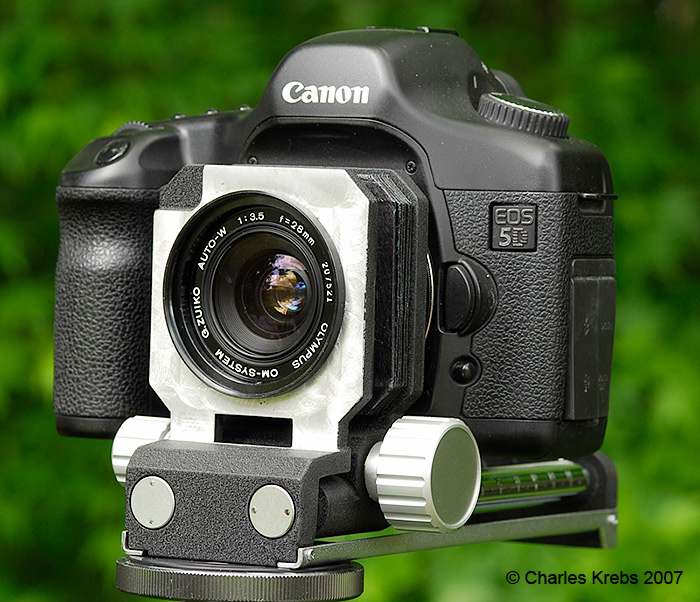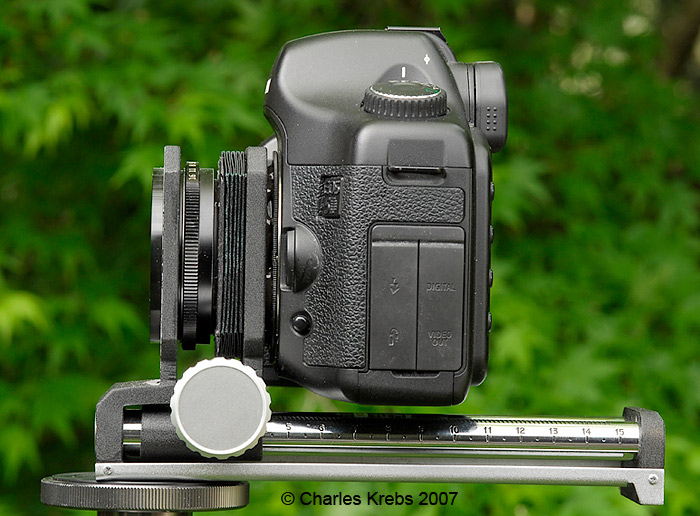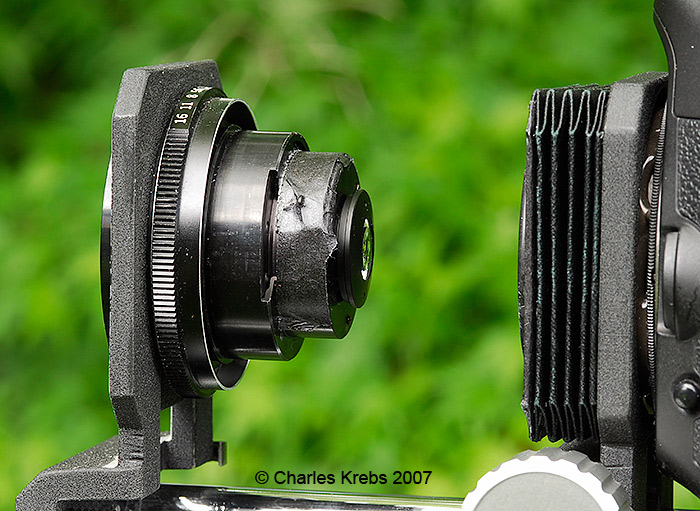It consists of the optics from an older Olympus 28/3.5 lens mounted to the inside of the rear standard of an old Minolta bellows. This standard does not move. (The Minolta mount was removed and the bellows standard was machined flat and the hole machined to the proper size in order to do this). A male EOS lens mount was attached to (what was previously) the front standard of the bellows. This moves in and out on the rails via the geared knob. The pleated bellows material was shortened in order to allow them to be compressed enough to reach “infinity” focus.
They key considerations when doing this were:
- The requirement that the lens remain in exactly the same position when the series of shots -- from near to far -- is taken. This is extremely important, and is the reason that focus is changed by moving only the camera body.
- A wide angle lens. I would probably prefer something even wider than 28mm (on a 24x36mm frame body). I’ve thought of also looking at a 24mm Olympus lens.
- The need to focus continuously from very close (at least 1:1) to "infinity”. The “infinity” focus is actually the trickier part. You need sufficient bellows (or some other focus mount) to allow enough extension for very close focus, and yet it all needs to compress sufficiently to get infinity focus as well. Care must be taken that the lens used, when focused at “infinity”, does not interfere with the SLR mirror mechanism as it swings up and down. (This is a bigger issue with the Canon 5D than Canon’s other full frame DSLR bodies. The mirror swings slightly closer to the lens mount in this model).
- The lens must perform well when extended for the close subjects. Many “conventional” wide-angle lenses give really horrible image quality, especially toward the corners of the frame, when extended in this way. This Olympus lens performs quite impressively!
Operationally the trickiest part is positioning this in the proper shooting location. Most foreground subjects are at, or near ground level. I have found that it is often easiest to hang this upside down suspended under a large tripod.




